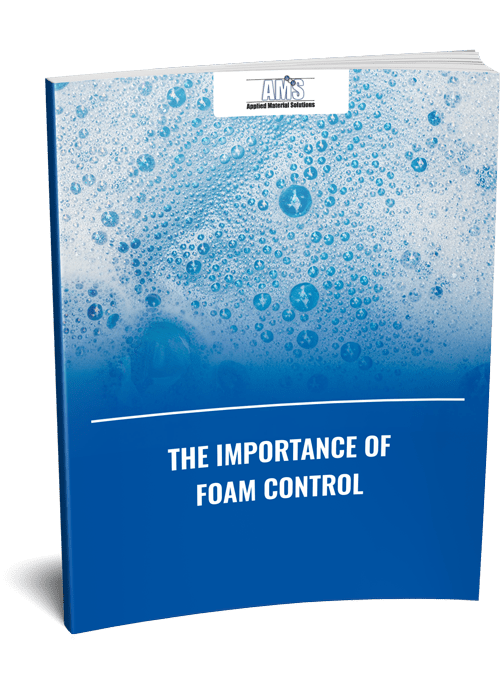Anti-Foam Control Solutions-- Effective Foam Monitoring for Industrial Applications
Anti-Foam Control Solutions-- Effective Foam Monitoring for Industrial Applications
Blog Article
Best Practices for Selecting the Right Anti-Foam Control Solution for Your Requirements
Selecting an efficient anti-foam control solution demands an extensive assessment of your special operational demands. Key considerations consist of the particular buildings of your process, such as temperature, chemical, and ph communications, every one of which considerably affect the efficiency of defoaming agents. Making sure compatibility with the tool and sticking to regulatory standards are necessary for effective implementation. As we explore these vital variables, it comes to be evident that the best options can cause not just instant advantages yet additionally lasting functional improvements that warrant further evaluation.
Understand Your Foam Problem
Regularly, companies come across foam-related problems that can impede operational performance and item high quality. Foam formation can take place throughout different processes, consisting of blending, fermenting, and transportation, and it frequently leads to tools ineffectiveness, production downtime, and increased functional expenses. Understanding the underlying reasons of foam generation is vital for dealing with the trouble successfully.
Foam can occur from numerous aspects, such as the nature of the materials entailed, anxiety degrees, temperature variations, and chain reactions. As an example, certain surfactants can worsen foaming, while high shear blending can introduce air, causing undesirable foam accumulation. Furthermore, environmental problems and the specific attributes of the liquid systems being used can significantly affect foam actions.
Determining the kind of foam-- whether it is steady or unpredictable-- is additionally vital. Secure foam tends to linger longer and is extra tough to handle, while unpredictable foam may dissipate a lot more conveniently. Anti-Foam Control Solutions. By evaluating these variables, companies can obtain insights into their foam issues, enabling them to establish targeted strategies to reduce foam development and boost total process performance. This foundational understanding is crucial for picking an appropriate anti-foam control option customized to details functional needs.
Evaluate Anti-Foam Options
When considering anti-foam options, it is essential to completely evaluate the various solutions readily available on the marketplace to locate one of the most ideal option for your certain foam-related difficulties. Anti-foam agents come in varied kinds, including silicone-based, non-silicone, and natural formulations, each offering distinctive properties and efficiency features.
Begin by analyzing the certain application demands, such as temperature limits, pH degrees, and the sort of foam being generated. For example, silicone-based representatives are understood for their effectiveness in high-temperature settings, while non-silicone choices may be preferable in food handling applications because of regulatory considerations.
It is additionally vital to think about the price of application and the preferred longevity of the foam control. Some formulas may supply immediate defoaming activity, while others provide long term stability. Performing small-scale examinations can offer understandings into the performance of each option in real-world problems.
Consider Application Compatibility
In the realm of anti-foam solutions, making certain application compatibility is extremely important for attaining optimum efficiency. The efficiency of an anti-foam agent largely depends on its capacity to work harmoniously within the particular parameters of your application, consisting of temperature level, pH, and the presence of other chemicals. Various formulas may execute variably throughout diverse problems, hence complete testing is essential.
Begin by recognizing the attributes of your process, such as thickness and the nature of the medium in which the anti-foam will be utilized. Some anti-foam agents may work well in liquid options however fall short in natural solvents. Furthermore, think about the possible interactions with existing materials and ingredients to avoid unfavorable effects.
It is also important to review read review the method of application. Whether the anti-foam is introduced constantly or batch-wise can affect its efficacy and long life in the system. Guarantee that the selected item is not just suitable with the functional criteria however also straightens with any kind of regulatory demands significant to your sector.
Assess Environmental Influence
Just how does the ecological impact of an anti-foam control option affect your total selection procedure? The environmental footprint of your chosen anti-foam representative is vital, as it reflects your dedication to sustainability and regulative compliance. Picking an item with marginal ecological consequences can improve your business picture and foster consumer trust.
When assessing environmental impact, consider the biodegradability of the anti-foam solution. Solutions with high toxicity can present significant risks to regional environments, possibly resulting in regulatory fines and ecological deterioration.
An additional important element is the visibility of unsafe compounds. Anti-foams including unsafe chemicals may necessitate unique handling and disposal procedures, making complex and boosting functional costs conformity with ecological policies. Therefore, picking environmentally friendly alternatives can alleviate these risks.
Monitor and Enhance Performance
To take full advantage of the efficiency of your anti-foam control service, it is necessary to consistently check and maximize its efficiency. Continuous evaluation permits the identification of any discrepancies in foam degrees and the succeeding efficiency of the anti-foam agent.
Apply a methodical approach to monitor crucial efficiency signs (KPIs), such as foam volume, security, and the action time of the anti-foam representative. Utilize logical devices and techniques, such as visual inspections, foam elevation measurements, and specialized sensing units, to gather exact data.

Furthermore, keep open interaction with providers for technical support and insights on the most up to date developments in anti-foam technology. This proactive strategy not only help in achieving optimal efficiency yet likewise minimizes functional disturbances and improves overall process efficiency. Frequently taking another look at and fine-tuning your anti-foam strategy makes Read Full Report certain that you are successfully handling foam-related challenges, inevitably bring about enhanced efficiency and price savings.

Conclusion
In conclusion, selecting the proper anti-foam control remedy demands a thorough evaluation of specific application needs, consisting of temperature, pH levels, and chemical compatibility. Rigorous screening for immediate and extended defoaming effectiveness is crucial, as is factor to consider of environmental effects and regulative compliance. By prioritizing eco-friendly choices and constantly keeping an eye on efficiency, functional performance can be enhanced while effectively mitigating foam-related difficulties. Sticking to these ideal practices will certainly promote educated decision-making in anti-foam control options.
Selecting a reliable anti-foam control check this site out remedy requires a thorough analysis of your distinct functional requirements.In the realm of anti-foam options, ensuring application compatibility is critical for accomplishing ideal efficiency.Exactly how does the ecological influence of an anti-foam control solution influence your general choice process?In verdict, selecting the suitable anti-foam control remedy requires a detailed evaluation of specific application needs, including temperature, pH degrees, and chemical compatibility (Anti-Foam Control Solutions). Adhering to these ideal practices will certainly facilitate informed decision-making in anti-foam control services
Report this page